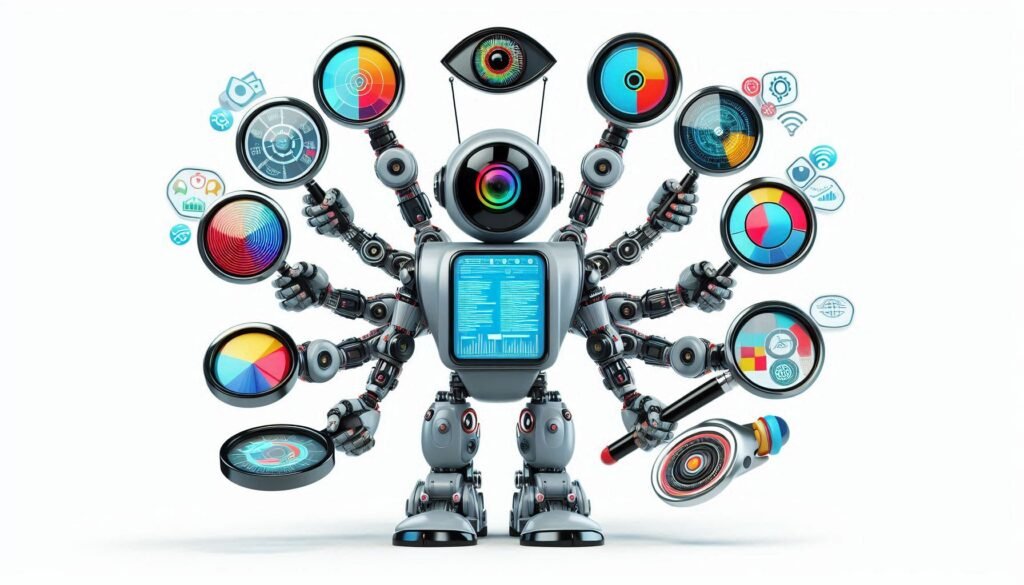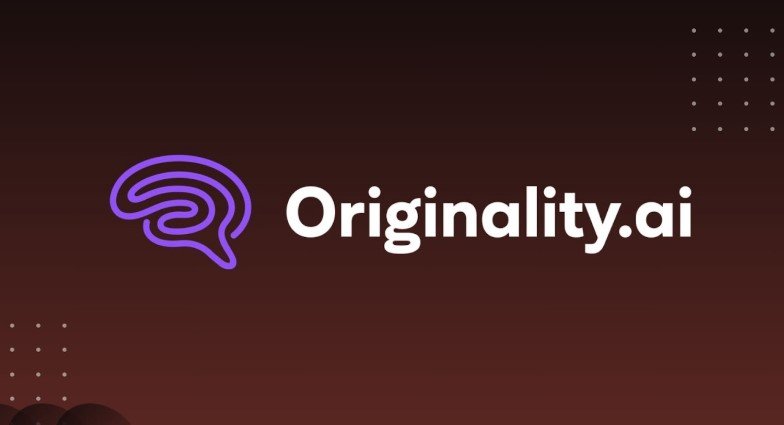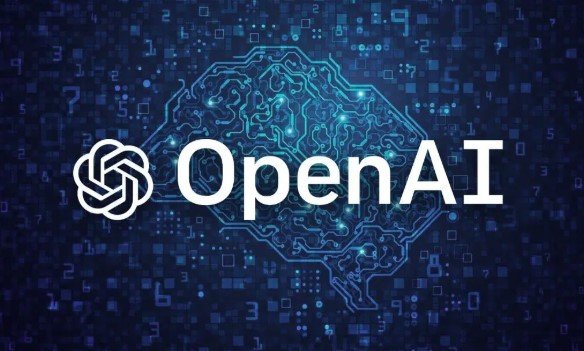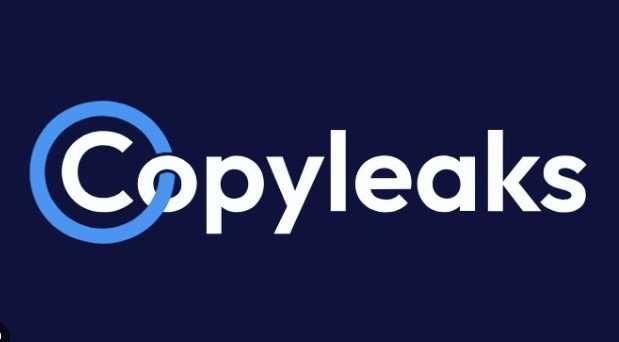7 Best AI Content Detector Tools
The rise of AI writing tools has been nothing short of revolutionary. These tools can generate human-quality text in the blink of an eye, making content creation faster and more accessible. But this rapid advancement also presents a challenge: how can we reliably distinguish between human-written content crafted by AI?
Enter Best AI content detector tools. These ingenious tools act as digital detectives, analyzing text for subtle clues that reveal the presence of an AI author. Whether you’re an educator concerned about plagiarism, a writer wanting to ensure originality, or simply curious about the source of a piece of writing, AI content detector tools can provide valuable insights.
In this comprehensive guide, we’ll delve into AI content detection, exploring seven of the best tools available today. We’ll examine their features, strengths, and limitations, empowering you to make informed decisions and navigate the evolving landscape of digital content.

Why Use an AI Content Detector Tool?
You might be thinking, “Can’t I tell if something is written by AI just by reading it?” While AI writing has become remarkably sophisticated, there are often subtle patterns and characteristics that can betray its artificial origins. AI content detector tools can help you identify these telltale signs, offering several key benefits:
- Verify content originality: For writers, editors, and publishers, it’s crucial to ensure that the content they’re working with is genuinely original and not just a clever imitation produced by an AI.
- Detect plagiarism: AI content detectors can be a valuable tool for educators and institutions to identify students submitting AI-generated work as their own.
- Maintain content quality: While AI can generate text quickly, it may not always match the nuances, creativity, and factual accuracy of human writing. AI detectors can help you identify content that needs further refinement.
- Understand AI capabilities: Using AI detector tools can provide a deeper understanding of how AI writing works, its strengths, and its limitations.
How Do AI Content Detector Tools Work?
AI content detector tools employ a variety of techniques to analyze text and identify signs of AI generation. Some common methods include:
- Perplexity analysis: This measures how surprised an AI model is by the text. AI-generated text often exhibits lower perplexity because it follows more predictable patterns.
- Burstiness detection: This analyzes the variability in sentence length and structure. Human writing tends to have more “burstiness,” with a greater mix of short and long sentences, while AI-generated text can be more uniform.
- Semantic analysis: This examines the meaning and coherence of the text. AI-generated text may lack logical flow, exhibit inconsistencies, or contain factual errors.
- Pattern recognition: This involves identifying patterns and repetitions in the text characteristic of AI writing.
7 Best AI Content Detector Tools
Now, let’s dive into the exciting world of AI content detection and explore seven of the leading tools available:

Originality.ai is a paid tool, but it offers a free trial that allows you to test its AI detection capabilities. It’s designed to be highly accurate and reliable, making it a popular choice for professional content creators and publishers.
- Pro: Claims high accuracy in detecting AI-generated content and provides a detailed report with analysis and highlights.
- Con: Primarily a paid tool, the free trial has limitations.
Originality. ai is like a seasoned expert with a keen eye for detail, able to spot even the most subtle signs of AI involvement.
2. GPTZero

GPTZero is a popular AI content detector that identifies text generated by large language models like ChatGPT. It utilizes a combination of perplexity and burstiness analysis to provide a score indicating the likelihood of AI involvement.
- Pro: User-friendly interface, provides a clear and concise result, particularly effective at detecting ChatGPT-generated text.
- Con: It may not be as accurate with text generated by other AI models and can be fooled by heavily edited AI-generated text.
Think of GPTZero as a specialized detective trained to recognize the unique fingerprints of ChatGPT.
3. Writer AI

Writer.com, a platform known for its AI writing assistance tools, also offers a free AI content detector. It employs a proprietary algorithm to analyze text and provide a percentage score indicating the likelihood of AI generation.
- Pro: Provides a percentage score for easy interpretation and can handle longer pieces of text.
- Con: The specific algorithm used is not publicly disclosed, making it difficult to assess its accuracy independently.
Writer.com’s AI Content Detector is like a general practitioner who can quickly assess your text’s “health” regarding AI involvement.

Content at Scale is another platform offering AI writing tools and a free AI detector. Its detector claims to use various techniques, including semantic analysis and pattern recognition, to identify AI-generated content.
- Pro: Claims to be more accurate than other tools using a multi-faceted approach, including semantic analysis and pattern recognition.
- Con: The specific details of its algorithm are not publicly available for scrutiny.
Content at Scale’s AI Detector is like a forensic investigator who uses various techniques to uncover hidden clues.
5. Crossplag AI

Crossplag is primarily a plagiarism detection tool that has expanded its capabilities to include AI content detection. It combines perplexity analysis and machine learning to identify AI-generated text.
- Pro: Integrates AI detection with plagiarism checking and supports multiple languages.
- Con: The free version limits how much text you can analyze.
Crossplag is like a multi-purpose tool that can check for plagiarism and identify AI-generated content, offering a comprehensive approach to content originality.
6. Open AI

OpenAI, the creator of ChatGPT, has developed its own AI text classifier. This free tool uses a fine-tuned language model to distinguish between human-written and AI-generated text.
- Pro: Developed by the creators of ChatGPT, providing valuable insights into the model’s capabilities and potential weaknesses.
- Con: Still in beta, so its accuracy may be limited requires a minimum of 1,000 characters for analysis.
OpenAI’s Text Classifier is like a self-aware AI that can recognize its kind, offering a unique perspective on AI-generated content.
7. Copyleaks AI

Copyleaks offers a free AI content detector with advanced machine-learning algorithms to identify AI-generated text. It’s known for its user-friendly interface and fast results.
- Pro: Easy to use, provides quick results, claims high accuracy in detecting various AI writing models.
- Con: The free version has limitations on usage.
Copyleaks AI Content Detector is like a rapid response unit, quickly assessing your content and providing clear results.
The Evolving Landscape of AI Content Detection
AI content detection is constantly evolving as AI writing technology advances. Here are some key trends and developments to watch for:
- More sophisticated algorithms: AI detector tools will become more accurate and reliable as they incorporate new techniques and learn from more data.
- Multi-modal detection: AI detection will go beyond text, analyzing images, videos, and audio for signs of AI involvement.
- Integration with other tools: AI detection will be integrated into platforms like learning management systems (LMS) and content creation tools.
- Ethical considerations: There will be ongoing discussions about the ethical implications of AI detection and how to use these tools responsibly.
Beyond Detection: The Importance of Human Oversight
While AI detector tools can be valuable, they shouldn’t replace human judgment. It’s important to use these tools as a guide and rely on your own critical thinking and analysis when evaluating content.
Embrace the Evolving Landscape of Digital Content
AI is transforming the way we create and consume content. AI detector tools are an important part of this evolving landscape, helping us navigate the challenges and opportunities that AI brings. By understanding how these tools work and their limitations, we can use them effectively to ensure originality, maintain quality, and promote ethical content creation.
So, dive into the world of AI detection, explore these free tools, and stay ahead of the curve in the ever-changing digital landscape!
FAQs
Q: Can AI content detectors be fooled?
A: While AI writing tools are constantly evolving, so are the detectors. It’s becoming increasingly difficult to fool these tools, especially the more sophisticated ones.
Q: Is it okay to use AI writing tools?
A: Absolutely! AI writing tools can be valuable for brainstorming, overcoming writer’s block, and speeding up content creation. The key is to use them ethically and transparently.
Q: What is the future of AI content detection?
A: As AI continues to advance, we can expect even more accurate and sophisticated detection tools. These tools will likely play a crucial role in maintaining authenticity and trust in the digital world.
Conclusion
The rise of AI-generated content presents both exciting possibilities and new challenges. The best AI content detector tools empower us to navigate this evolving landscape with confidence. By using these tools effectively, we can ensure that the content we create and consume is authentic, original, and truly human.
So, whether you’re a writer, marketer, or simply someone who values genuine connection, embrace these tools and stay ahead of the curve. After all, in a world increasingly influenced by AI, it’s more important than ever to celebrate the unique qualities that make us human.
READ MORE:
